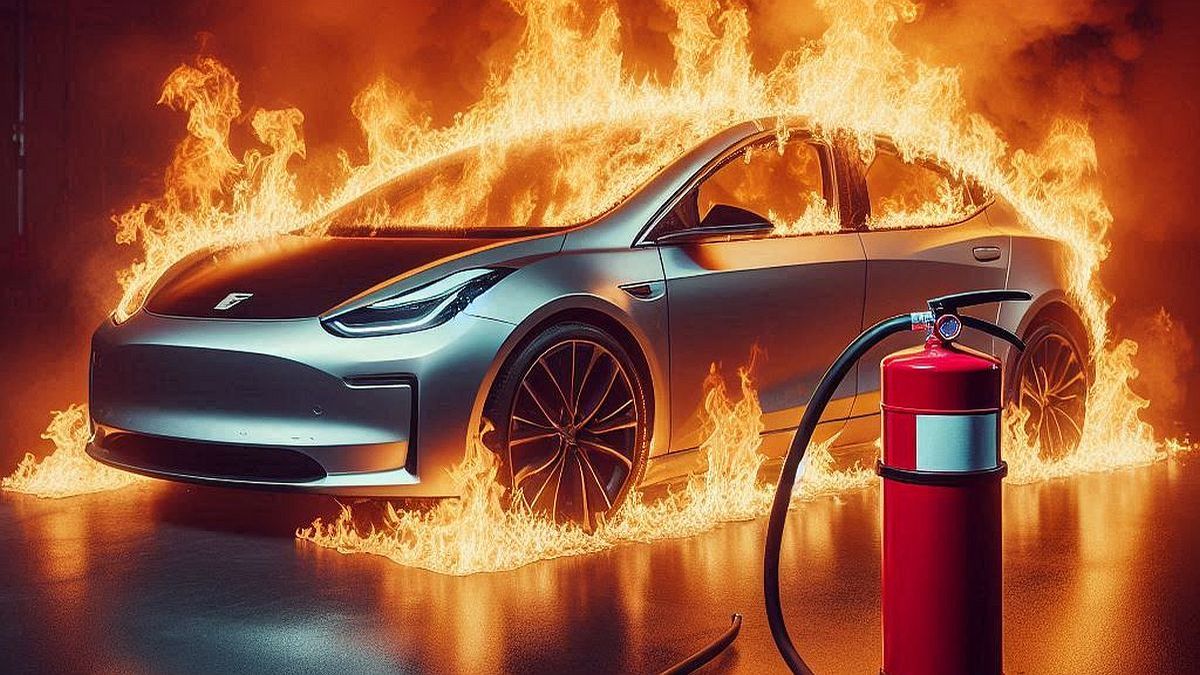We all use technological devices daily that work with lithium batteries, such as cell phones, notebooks, tablets. At the same time, electric mobility is growing with the use of cars, motorcycles, groups, skateboards and even bicycles. However, we are not aware of the risk associated with the fires caused by failures or misuse of these batteries and, above all, how difficult it is to turn them off. While fires are preventable, our country faces a great challenge: the lack of preparation to face them.
In Argentina, prevention usually occurs when it is an obligation. Therefore, much remains to be done, especially in a context where the demand for lithium batteries has been significantly increasing, without a clear control over the quality of imported products or the amount of real cycles that this battery can take before losing its capacity.
To provide a fact, according to a recent report from the Association of Argentine Component Factories (AFAC) and Promotive SA, the fleet of vehicles with some degree of electrification – that is, hybrid and electric – grew in an accelerated way in the last year. Only vehicles with hybrid motorization (gasoline/electric) went from less than 28,000 units in 2023 to 46,657 in 2024, an increase of 69%. And although the number of 100% electric vehicles remains very low -there are 1,555 units throughout the country -its year -on -year expansion was 41%.
This reveals that the transition to electrification is no longer a distant trend, but a process that is accelerating, although on a still marginal base compared to a car park of more than 15 million vehicles.
The Autonomous City of Buenos Aires is an example of this trend: they already have 12 electric buses and project to increase their fleet with approximately 50. If we observe the industrial world, many companies are changing their self -elevators to combustion for electricity, while installing load stations or poorly located or without the necessary protection.
Although the most notorious fires are usually linked to vehicles, domestic devices also have real risks.
The exponential growth of these new technologies also implies new responsibilities: having quality standards, battery recycling procedures and fire or failures response strategies.
There are four ways in which a lithium battery can generate a fire:
- Thermal packaging overheating.
- Short internal or external circuit.
- Overload or physical damage.
- Manufacturing failures or accumulated defects.
As the use of electric vehicles increases, concern for fires grows because although they have a lower occurrence rate than combustion vehicles, they are much more harmful due to the temperature that these fires take. Qbe registered a 77% growth in burning electric vehicles related to batteries in 2024 and 93% in Electric and Ebikes.
Beyond the importance of understanding the reasons why these fires can be initiated, the most worrying is not only fire itself, but extremely toxic gases that are released during a thermal packaging reaction, especially hydrogen fluoride (HF), which can seriously affect health in seconds.
What happens if the necessary preventive measures are not taken and if the necessary elements to extinguish these fires are not have? In Spain, for example, in April of this year, two firefighters died, another was hospitalized for serious injuries and around 15 people suffered intoxication in the fire occurred in an underground parking in Alcorcón, caused after a clash and the fire of an electric vehicle. This case revived the debate about the need to design infrastructure necessary to avoid these facts and have specific protocols and equipment to act in these cases.
Regarding how to extinguish a fire caused by a lithium battery, the first thing that should be clarified is that Traditional extinguisher agents are not effective. The fire that generates a battery does not belong to a single class:
- Class A: Plastic or cellulose housing.
- Class B: flammable electrolytes.
- Class C: presence of electricity.
- Class D: metals such as lithium, magnesium, nickel, cobalt, etc.
Turning off a fire with multiple classes involved and difficult to control materials requires a specific solution, such as the F500EA, the only approved product that exceeds the NFPA 18A 7.7 regulations of National Fire Protection Association, in addition to being approved by the INTI and approved by the EPA, the United States Environmental Protection Agency, as a biodegradable agent, to turn off fires in lithium batteries Micellar technology encapsulator is especially valuable.
Currently, there is a lot of confusion due to the lack of clear regulations and specific certifications. In Argentina they are beginning to gather different entities for the Creation of a national norm that addresses these new types of fires.
In the world, there are already important advances. In the United States, for example, the NFPA 18A (Section 4.3), already recognizes the use of Encapsulative agents based on spherical micelles. These have been tested in international essays by renowned institutions such as Kiwa, Dekra, Daimler, Dutech, Bosch, the Fraunhofer-Gesellschaft Institute and the Technical University of Clausthal For: fire extinguishers, control or eliminate thermal packaging, encapsulate flammable electrolytes and explosive gases, and to reduce the toxicity of the HF.
Also, the United States is advancing in the drafting of the standard NFPA 800what will be the Battery security codeand will address its entire life cycle: from manufacturing to its transport, use, maintenance and final disposal.
For its part, in Europe The norm Nem nta 8133 It is already used as a test standard for fire extinction in batteries. Even in Argentina there are products that have been approved under this standard, such as the F500.
It is also advancing in global frames such as ISO 17840linked to safety in electric vehicles.
The electrification of mobility and the expansion of devices with lithium batteries are already a daily reality. Every year that passes without updated standards, without specific response procedures and without adequate training, it is a year in which the risks multiply. Having certified solutions, processes that contemplate its useful life cycle and clear protocols for action cannot remain an exception or improvised reaction to emergencies. It is time to anticipate and integrate prevention as an essential component of this technological transition that is already underway.
Director of Georgia
Source: Ambito
David William is a talented author who has made a name for himself in the world of writing. He is a professional author who writes on a wide range of topics, from general interest to opinion news. David is currently working as a writer at 24 hours worlds where he brings his unique perspective and in-depth research to his articles, making them both informative and engaging.




